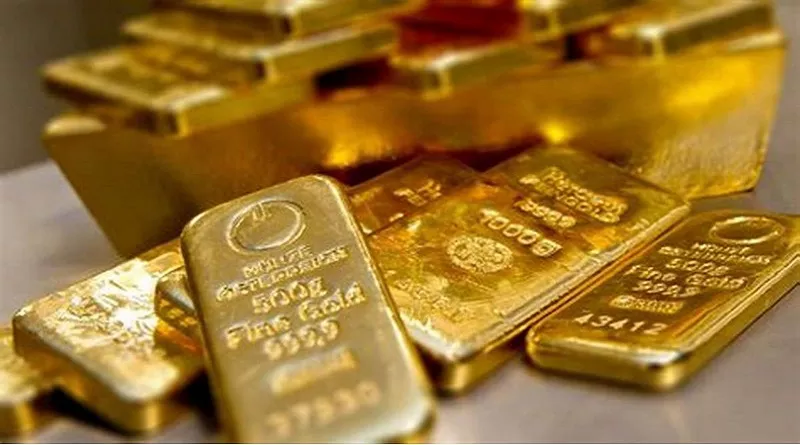Gold has always been a significant asset, valued for its rarity and utility in various applications, from jewelry to electronics. Understanding historical prices can provide valuable insights into market trends, economic conditions, and investor behavior. This article explores the price of gold in 1981, a pivotal year marked by economic turmoil, high inflation, and significant geopolitical events.
In the early 1980s, the global economy faced numerous challenges, including high inflation rates, political unrest, and fluctuations in the value of the U.S. dollar. These factors significantly influenced the price of gold, which is often seen as a safe haven asset during times of uncertainty. By examining the price movements and contextual factors of gold in 1981, we can gain a clearer understanding of its role in that era.
Historical Context of Gold Prices
The Economic Climate of the Early 1980s
The late 1970s and early 1980s were characterized by significant economic challenges:
Inflation: The U.S. experienced soaring inflation, peaking at 13.5% in 1980. This was largely driven by rising oil prices, increased consumer demand, and expansive fiscal policies.
Interest Rates: To combat inflation, the Federal Reserve raised interest rates aggressively. By December 1981, the federal funds rate reached around 20%, creating a high-interest environment.
Geopolitical Events: The Iranian Revolution in 1979 led to instability in the Middle East, causing oil prices to surge and contributing to inflation. Additionally, the Soviet invasion of Afghanistan in late 1979 heightened global tensions.
Gold as a Safe Haven
In times of economic uncertainty, investors often turn to gold as a hedge against inflation and currency devaluation. This behavior was evident in 1981 as people sought stability in precious metals amidst financial turmoil.
Gold Price Trends in 1981
Annual Average Price
In 1981, the average price of gold fluctuated significantly due to the economic factors at play. The annual average price for gold in 1981 was approximately $480.00 per ounce. This represented a sharp increase from earlier years and set the stage for further volatility.
Monthly Price Breakdown
To provide a clearer picture, here’s a breakdown of the monthly average gold prices in 1981:
January: $520.00
February: $535.00
March: $516.00
April: $485.00
May: $470.00
June: $425.00
July: $395.00
August: $400.00
September: $440.00
October: $455.00
November: $500.00
December: $510.00
Notable Price Events
January Spike: The price peaked at around $540 per ounce in January, reflecting heightened tensions and investor demand.
Mid-Year Decline: Gold prices fell significantly during the summer months, hitting a low of approximately $370 per ounce in July. This decline was influenced by rising interest rates and a stronger U.S. dollar.
Year-End Recovery: As inflation remained a concern and economic uncertainty continued, gold prices rebounded toward the end of the year, closing at around $510 per ounce in December.
Factors Influencing Gold Prices in 1981
Inflation and Economic Policies
The rampant inflation of the late 1970s drove many investors to seek gold as a protective measure. With consumer prices rising sharply, gold became an attractive alternative to cash and bonds, which were eroding in value.
Federal Reserve Actions
The Federal Reserve, under Chairman Paul Volcker, implemented aggressive monetary policies to combat inflation. The high-interest rates made borrowing more expensive and had a dampening effect on economic growth, further influencing gold prices.
Geopolitical Tensions
The geopolitical landscape of the early 1980s played a significant role in gold pricing. Events such as the Iranian Revolution and the Soviet invasion of Afghanistan contributed to global instability, prompting investors to turn to gold as a safeguard.
The Role of Gold in Investment Portfolios
Diversification Strategy
In 1981, financial advisors increasingly recommended including gold in investment portfolios as a hedge against economic downturns. This diversification strategy helped mitigate risk, particularly for those concerned about inflation and currency fluctuations.
Changing Investor Sentiment
The perception of gold as a safe haven strengthened during this period, as more individuals and institutions recognized its potential to preserve wealth. This shift contributed to increased demand and higher prices throughout the year.
Comparisons with Other Assets
Gold vs. Stocks
During 1981, stock markets faced volatility due to economic uncertainty. The S&P 500 index struggled, reflecting investor anxiety. In contrast, gold prices showed resilience, attracting those seeking stability.
Gold vs. Bonds
With rising interest rates, bond prices fell, making gold a more appealing option for investors looking for security. The opportunity cost of holding gold decreased as bond yields became less attractive.
Long-Term Impact of 1981 Gold Prices
Shaping Future Trends
The price of gold in 1981 laid the groundwork for future market behavior. The experience of high inflation and economic volatility during this period influenced investor strategies in subsequent decades.
The Bull Market of the 1980s
Following the events of 1981, gold entered a prolonged bull market throughout the 1980s. Prices continued to rise, peaking at over $800 per ounce in 1982, driven by ongoing economic concerns and investor demand.
Conclusion
The price of gold in 1981 reflects a tumultuous period characterized by economic challenges, high inflation, and geopolitical instability. With an average price of approximately $480 per ounce, gold emerged as a crucial asset for investors seeking protection against uncertainty. Understanding the historical context of gold prices in 1981 provides valuable insights into market dynamics and investor behavior, emphasizing gold’s enduring role as a safe haven asset. As we move forward, the lessons learned from this pivotal year continue to resonate in today’s financial landscape.
Related topics:
- What is Gold Price in UK Today(October 28)
- What is Gold Rate in India Today (October 28)
- What is The Spot Gold Price Today(October 28)


